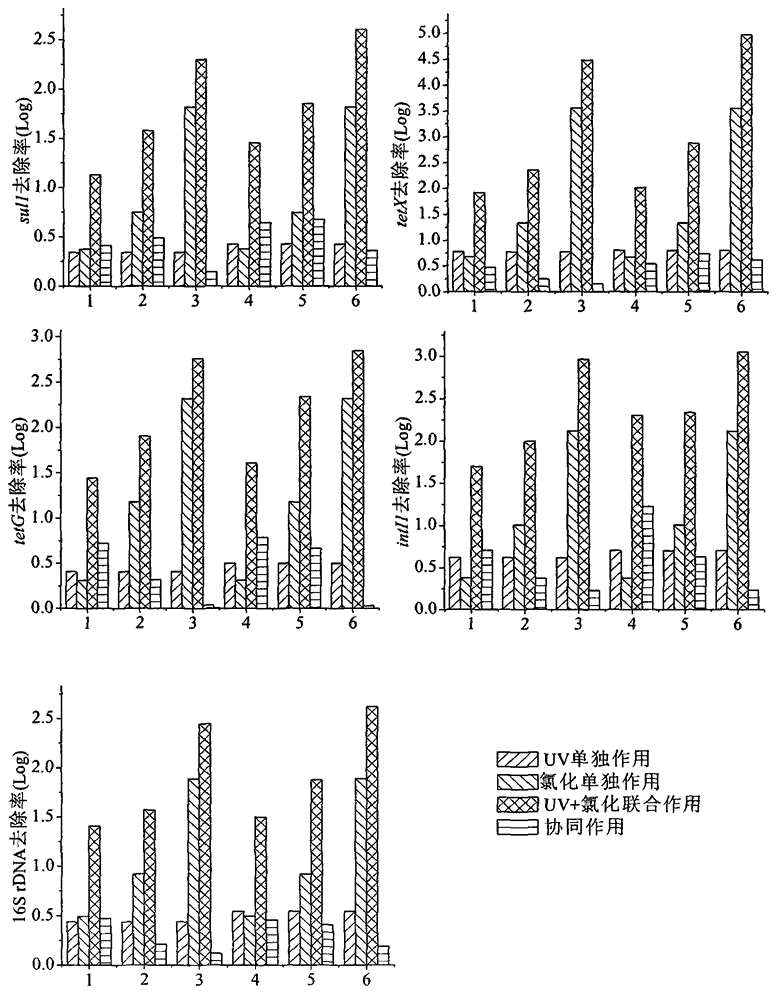Method for removing antibiotics resistance genes (ARGs) in sewage based on disinfecting technology
An antibiotic resistance, sewage technology, applied in biochemical equipment and methods, recombinant DNA technology, chemical instruments and methods, etc.
- Summary
- Abstract
- Description
- Claims
- Application Information
AI Technical Summary
Problems solved by technology
Method used
Image
Examples
Embodiment Construction
[0062] Such as figure 1 Shown is a method based on disinfection technology to remove antibiotic resistance genes in sewage. Water samples were taken from a sewage treatment plant in Nanjing, which adopted the Circulating Activated Sludge (CAST) process. Collect the CAST process supernatant (secondary effluent) for disinfection experiments. The water quality and the initial ARGs content in the water samples are shown in Table 1 and Table 2.
[0063] Table 1 Disinfection treatment water quality
[0064]
[0065] Table 2 Gene content in water samples before disinfection (copies / mL)
[0066]
[0067] The collected water samples were subjected to UV light for 15s and 30s at room temperature (20±2°C), respectively, that is, the UV dose was 62mJ / cm 2 、125mJ / cm 2 ; Add NaClO immediately after the light to make the organic chlorine FC reach 5, 20, 40mg / L respectively, stir with a stirrer, add NaClO after 120min of reaction 2 S 2 o 3 (1.5%) to terminate the reaction, get 2...
PUM
 Login to View More
Login to View More Abstract
Description
Claims
Application Information
 Login to View More
Login to View More - R&D
- Intellectual Property
- Life Sciences
- Materials
- Tech Scout
- Unparalleled Data Quality
- Higher Quality Content
- 60% Fewer Hallucinations
Browse by: Latest US Patents, China's latest patents, Technical Efficacy Thesaurus, Application Domain, Technology Topic, Popular Technical Reports.
© 2025 PatSnap. All rights reserved.Legal|Privacy policy|Modern Slavery Act Transparency Statement|Sitemap|About US| Contact US: help@patsnap.com



